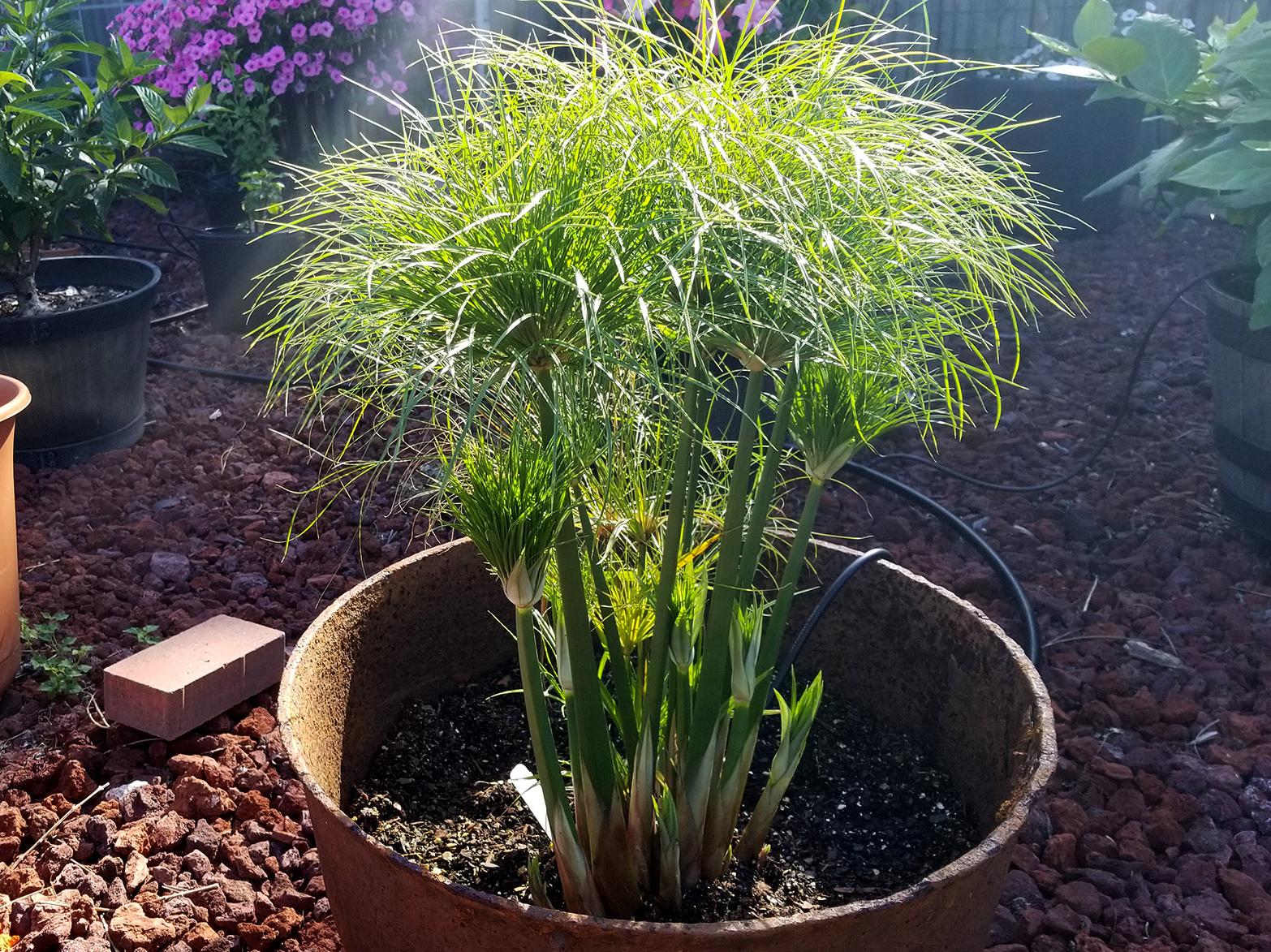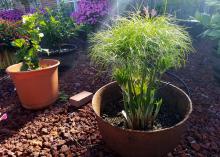Information Possibly Outdated
The information presented on this page was originally released on May 14, 2018. It may not be outdated, but please search our site for more current information. If you plan to quote or reference this information in a publication, please check with the Extension specialist or author before proceeding.
Try papyrus selections in Mississippi gardens
With all of the bright, colorful summer annuals we’re planting this month, I find myself looking for more out-of-the-ordinary plants for my landscape. One that always creates a bit of a stir and generates questions is an old plant called papyrus.
Papyrus, similar to the plant grown and used by the ancient Egyptians to make paper, is easy to grow and has few pests. If you’re intrigued by this plant, you will be happy to learn there are three selections suitable for use in our Mississippi landscapes.
King Tut has a regal and exotic presence in the garden. Topping out at more than 6 feet tall, this plant needs plenty of room for its large, pendulous leaves that display large, greenish flowers.
If you want that exotic look but have only a small growing space, there are a couple of smaller papyrus choices that should fill the bill. Prince Tut and Baby Tut are both fun plants that will not overwhelm a small space.
I grow Prince Tut in my landscape in a 15-gallon container that is perfect for displaying the 3-foot-tall plant. This is a nice compact version of King Tut, as it only gets about half as tall. It is a sturdy plant with stems that are less likely to flop over.
I like the smallest selection, Baby Tut, which grows less than 2 feet tall. It can be fantastic in a container on the porch or patio. This plant is quite happy growing along the edge of a pond in a few inches of water. In fact, I grow Baby Tut in an iron cauldron in a couple of inches of water.
All three papyrus selections feature triangular, green stems topped by an umbrella-like inflorescence with hundreds of thread-like rays. The flower clusters appear at the ends of the rays. As the flowers mature, they transform into brown, nut-like fruits.
Papyrus generally isn’t hardy enough to survive unusual winters like we just experienced or winters with extended freezing temperatures.
Consider these papyrus selections perennials in areas where winter remain above 35 degrees. In Mississippi in zones 8 and 9, King Tut will usually die back to the ground and return the next year. You must protect Prince and Baby Tut during the winter months, hence the reason for growing them in containers.
But even if they don’t come back the next spring, their rate of growth and unique texture make it worth treating them as annuals. Home gardeners won’t be disappointed buying a plant or two each year.
Any of these papyrus selections make for great garden and landscape conversations on their connection to the distant past.



